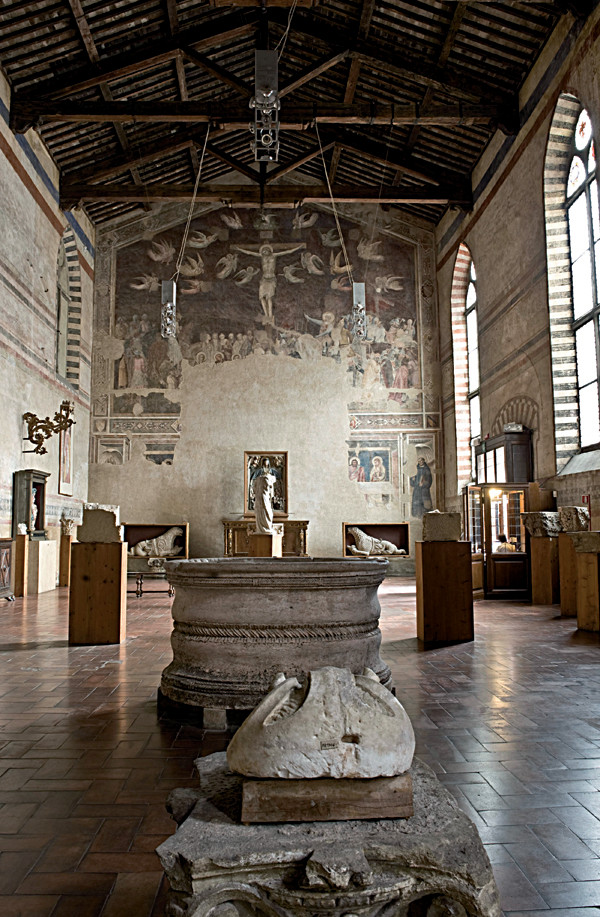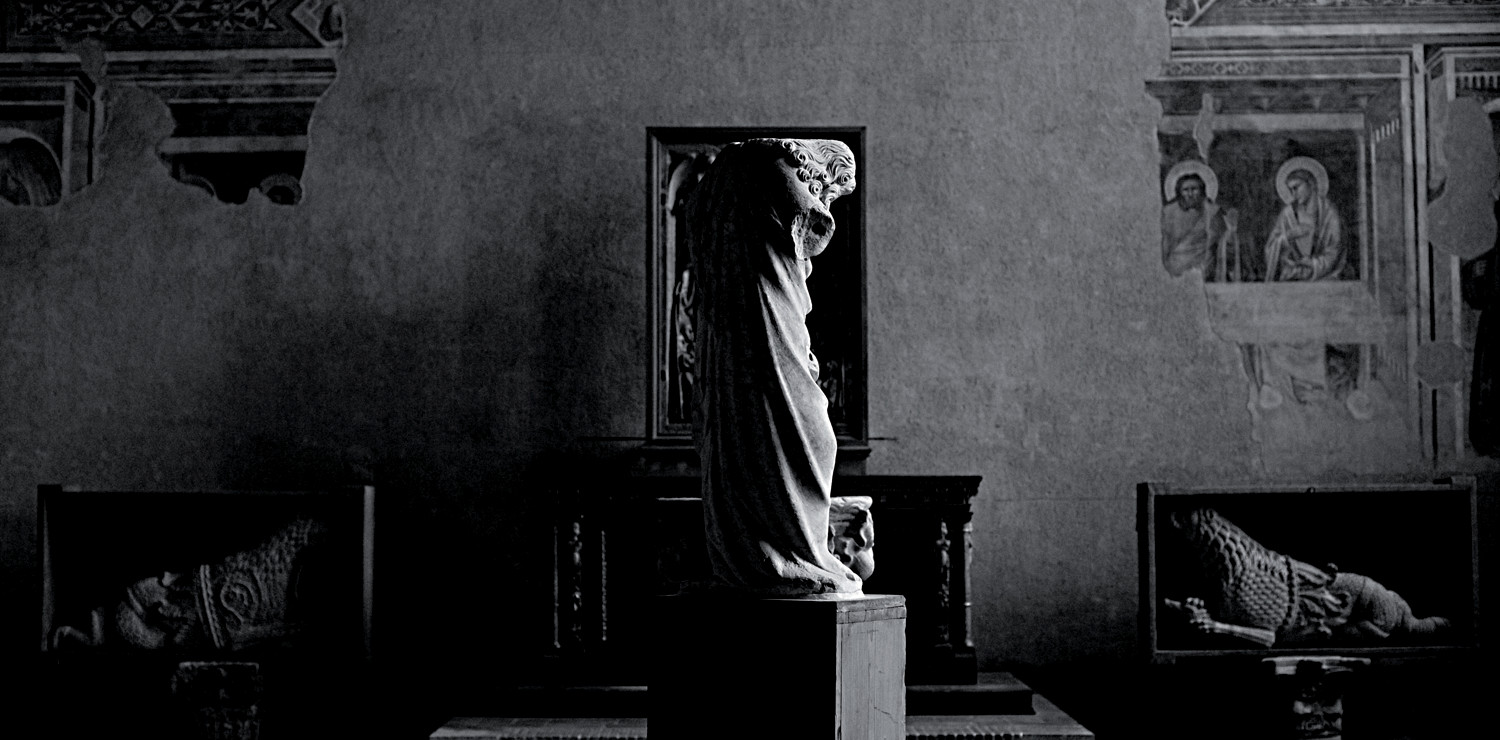The Romano Fondation
History, works and curiosities of one of the lesser-known Florentine muses
The collection, which constitutes the Salvatore Romano Foundation, preserves the evocative and ornamental tasteful arrangement created by the collector of the same name, and is a direct testimony to the artistic sensibility of this antiquarian who had relationships with the most important collectors and museum directors of his time. Salvatore Romano embodies a mix of mystery and passion for art in the round (from Giotto, Simone Martini, Masaccio, Filippino Lippi, Domenico Beccafumi and Giambologna).
Works to see at the Salvatore Romano Foundation
The undisputed protagonist is the fresco of the Crucifixion, which towers from the top of the first wall over the entire room. Unfortunately, the scene is not complete, carried away by work done during the 19th century, but the upper part, depicting Christ on the cross surrounded by angels, is intact. Prominent among the sculptures are the Caryatid and the Adoring Angel by Tino di Camaiano, both dated around 1320. The Caryatid depicts a woman in an almost reclining position, as if she were carrying a weight on her shoulders (in fact, originally the caryatids were statues that functioned as columns or pilasters). The Angel, on the other hand, placed in adoration, no longer has feathered wings on her back, but rather flowers. It is originally thought to have been part of the tomb of Bishop Antonio d'Orso (died 1320), located in the church of Santa Maria del Fiore. Another important sculptural group is the Madonna and Child by Jacopo della Quercia, datable to 1410. The work, in terracotta, had been created for the courtyard of Palazzo Segni-Masetti; it remained unfinished due to Jacopo's death in 1438. Nevertheless, the sculpture expresses tangible tenderness: the Madonna lovingly embraces her son, conveying maternal love. No less important are the bas-reliefs of San Prosdocimo and San Massimo, made by Donatello in the mid-15th century.
History of the Salvatore Romano Foundation
Born in Meta di Sorrento in 1875, he had gone to Genoa to become a naval engineer but an encounter with a violin teacher led him to discover his aesthetic vocation. In the early 1900s, he returned to Naples and traded in violins, then broadened his horizons to art. He came into close contact with the cultured and refined circle of Florentine merchants, and was so attracted to them that a few years later he moved to Florence. He had an extraordinary ability to recognize the artistic qualities of objects, and for many years, without fuss, he devoted himself to collecting and trading art objects, often masterpieces that had fallen into oblivion.
Antiquities of all kinds and from all eras. But he never joined the antiquarian clan: he shunned worldliness, so little is known of his life. In 1939 he arranged his collection by purchasing two floors of the Palazzo Magnani Feroni on Via dei Serragli, which became his personal and singular art gallery. Reserved for a few, plus many of the objects collected over the years remained packed in the crates in which they had been placed when purchased.
The mystery of the crates - sculptures, fragments of decorations, detached frescoes and furnishings from various regions of Italy between the ancient Roman period and the 17th century - was only revealed in 1946 when Romano decided to give seventy of the works locked in them to the City of Florence to be displayed in the 14th-century Cenacolo di Santo Spirito. Romano later died in 1955.
The 14th-century building was originally an Augustinian convent and was renovated by Filippo Brunelleschi himself. At the end of the 16th century the structure fell into disuse (the church had already been destroyed by fire in 1471 and had not been rebuilt).Unfortunately, its artistic value was realized only in the middle of the last century; in fact, during the nineteenth century it was used as a depot for streetcars, and so that they could be parked comfortably, the wall facing the courtyard was destroyed, wall on which was frescoed the Last Supper by Andrea Orcagna (an admirer of Giotto), of which only a fragment remains. Fortunately, the Crucifixion, placed above the supper, which was painted around 1360, was retained. In 1936 it was decided to remedy the situation, closing the wall and restoring the survived fresco.
 Fondazione Romano, Florence
Fondazione Romano, FlorenceSalvatore Romano Foundation Timetable and Tickets:
Monday and Saturday: 10am-5pm
Sunday: hours 1-5 p.m.
Closed Tuesday through Friday, New Year's Eve, Easter, Aug. 15, Dec. 25
Full: 10 €.
Concessions: 7 €, 18 to 25 years old
Free admission for those under 18 years of age
Guided tours and activities: 5 € for NON residents of the metropolitan city of Florence, 2.50 € for residents of the metropolitan city of Florence
Unicoop Florence: two whole tickets for the price of one









